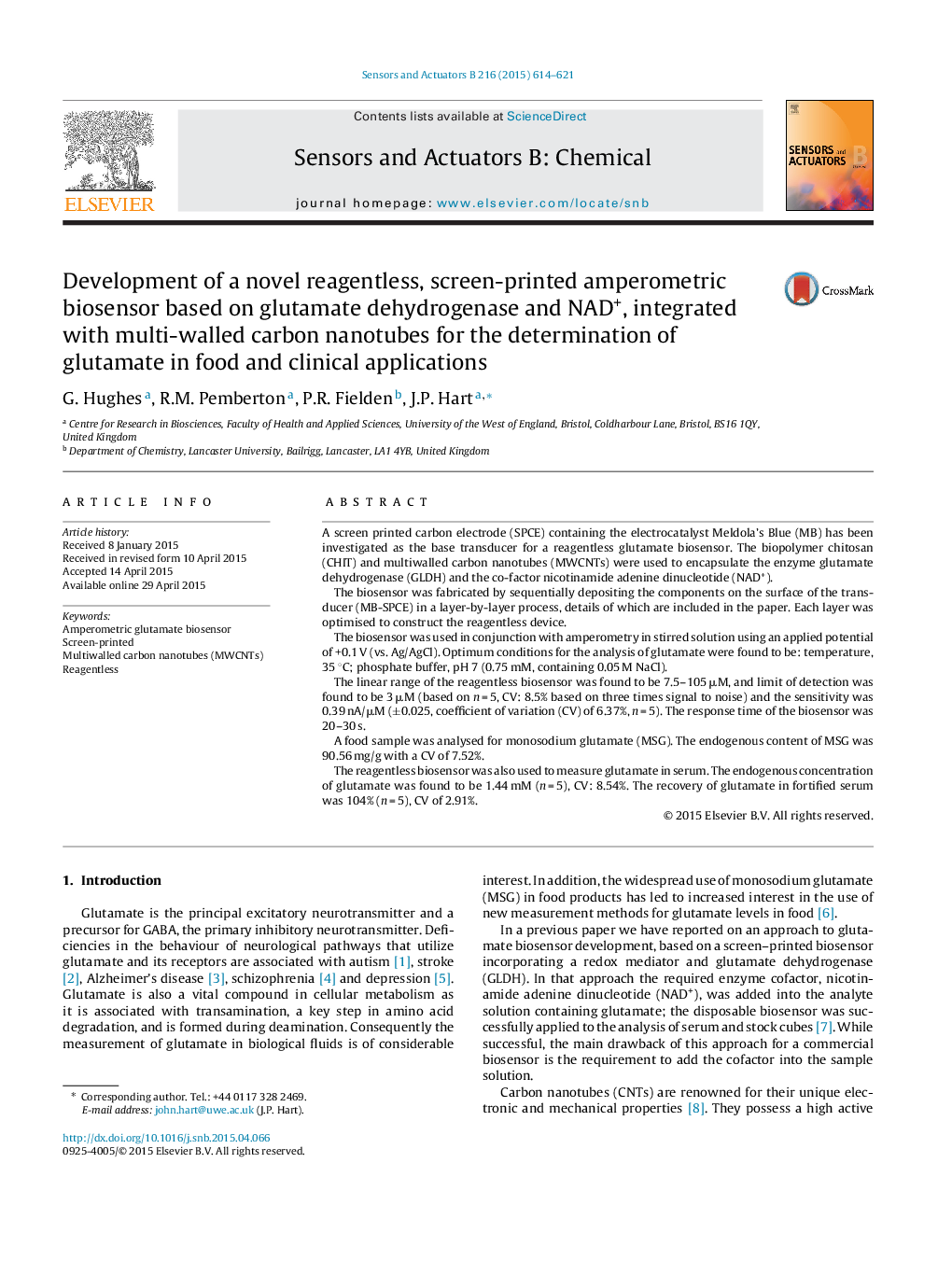| کد مقاله | کد نشریه | سال انتشار | مقاله انگلیسی | نسخه تمام متن |
|---|---|---|---|---|
| 750634 | 1462075 | 2015 | 8 صفحه PDF | دانلود رایگان |

• First report on the fabrication of a reagentless amperometric glutamate biosensor using MWCNT's.
• High reproducibility, low cost due to screen printing and ease of use for real samples.
• Detection limit of 3 μM, linear range; 7.5–105 μM and a sensitivity; 0.39 nA/μM.
A screen printed carbon electrode (SPCE) containing the electrocatalyst Meldola's Blue (MB) has been investigated as the base transducer for a reagentless glutamate biosensor. The biopolymer chitosan (CHIT) and multiwalled carbon nanotubes (MWCNTs) were used to encapsulate the enzyme glutamate dehydrogenase (GLDH) and the co-factor nicotinamide adenine dinucleotide (NAD+).The biosensor was fabricated by sequentially depositing the components on the surface of the transducer (MB-SPCE) in a layer-by-layer process, details of which are included in the paper. Each layer was optimised to construct the reagentless device.The biosensor was used in conjunction with amperometry in stirred solution using an applied potential of +0.1 V (vs. Ag/AgCl). Optimum conditions for the analysis of glutamate were found to be: temperature, 35 °C; phosphate buffer, pH 7 (0.75 mM, containing 0.05 M NaCl).The linear range of the reagentless biosensor was found to be 7.5–105 μM, and limit of detection was found to be 3 μM (based on n = 5, CV: 8.5% based on three times signal to noise) and the sensitivity was 0.39 nA/μM (±0.025, coefficient of variation (CV) of 6.37%, n = 5). The response time of the biosensor was 20–30 s.A food sample was analysed for monosodium glutamate (MSG). The endogenous content of MSG was 90.56 mg/g with a CV of 7.52%.The reagentless biosensor was also used to measure glutamate in serum. The endogenous concentration of glutamate was found to be 1.44 mM (n = 5), CV: 8.54%. The recovery of glutamate in fortified serum was 104% (n = 5), CV of 2.91%.
Journal: Sensors and Actuators B: Chemical - Volume 216, September 2015, Pages 614–621